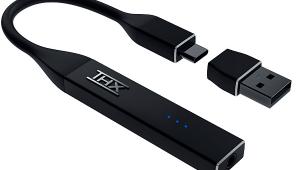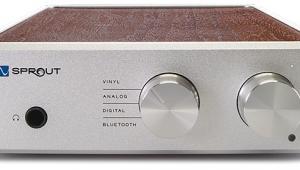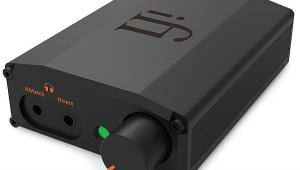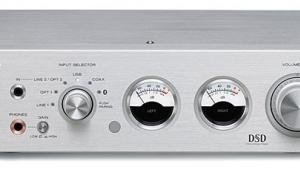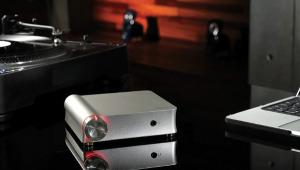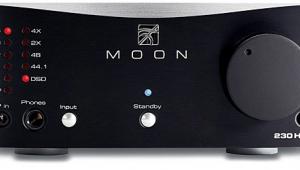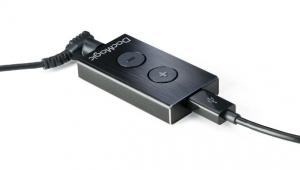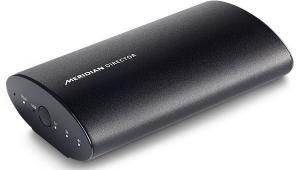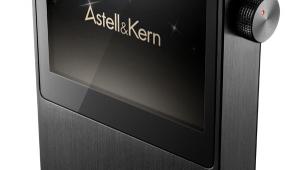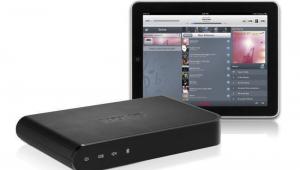This is an amazing DAC at this price point. I don't know how Meridian did it except as a lost leader to introduce people to their other products. For more about this, read my review: http://donaldscarinci.com/audiophile-product-of-the-year-2013-prediction...
Review: Meridian Explorer
[*Note: After sending me an Explorer, Meridian quietly introduced a running change into its production. According to the company, the change affects the output of the headphone amp, and was made to address criticisms concerning the product’s compatibility with “esoteric, low-impedance headphones.” Since none of the ‘phones I used for my listening comparison fall into that category, I opted to move ahead with a review based on my original sample. —A.G.]
Audio enthusiasts know Meridian as a company that makes products aimed at the luxury end of the hi-fi spectrum — if you have to ask the price, don’t bother. But with its new Explorer DAC, Meridian is seeking to reach a more mass-market consumer. How mass? A company rep I spoke with dropped the Beats and Bose names when we discussed headphone compatibility, though I expect the Explorer’s actual target market is audiophiles who make equipment buying decisions based more on careful research than marketing.
At 4 inches long, the ovoid tube-shaped Explorer is slightly larger than the Audioquest and HRT DACs, though it still falls well within the portable category. In fact, Meridian includes a soft black felt case just to take the Explorer on the go. The DAC connects to a laptop via a USB A to Mini-b cable (included) and its other end sports separate 3.5mm jacks for headphone and line-level connections, with the line-level jack doubling as a Toslink optical digital output.
Three white LEDs are located on the Explorer’s top half. One LED indicates that 44.1/48 kHz data is being received; two LEDs means 88.2/96 kHz; and three LEDs indicates a 176.4/192 kHz sampling rate. Now that I’ve mentioned 176.4/192 kHz, support for ultra-high-rez file formats is a key point differentiating the Explorer from the other DACs featured here. When the Toslink digital out — another unique feature — is used, only signals with up to 96/24 resolution can be conveyed, however. Volume adjustment works the same as with the Audioquest and HRT DACs: built-in analog adjustment controlled via your computer’s sound level setting.
Performance
Listening to both the Nick Cave and Amor de Dias tracks with Sennheiser cans, the Meridian’s sound was the equal of both the Dragonfly and microStreamer when it came to detail, but I heard absolutely no trace of edginess or grit. The sound was smooth, engaging, and spacious, with an extra dose of warmth that prevented fatigue during extended listening sessions. When I switched to the Phiatons, however, tracks like “The House at Sea” that sounded crisp on the Sennheisers with the other DACs came off as comparatively soft and subdued. At first I thought this might be an issue with my first-run sample: At a specified 32?, the Phiatons have lower rated impedance than the Sennheisers. But the difference between the two isn’t far off, and 32? hardly ranks in the “ultra-low” range that Meridian’s running change addresses. The upshot: Choose headphones carefully to mate with the Explorer.
Heard on the big system, the magic I heard when listening with the Sennheiser cans came across vividly. Dynamics with the Explorer also seemed more pronounced. About three minutes into “Jubilee Street,” the song’s pace shifts from a dirge to a shuffle, with acoustic guitar and violin fading in. With the Explorer, that shift was marked by a dramatic widening of the soundstage — something I didn’t notice with the other two DACs. Listening to the Mazzy Star track, vocals sounded a bit recessed in comparison with both the microStreamer and DragonFly, but the Explorer’s lush, yet detailed presentation helped compensate for any lack there.
Listening to the Cobb Quartet FLAC track, I heard excellent delineation of instruments in space, and there was a sense of an actual body blowing into a trumpet. Plucked strings during the guitar solo also had a rich, appealing texture. To sum up, the Explorer’s rendering of this track was nothing short of gorgeous.
Bottom Line
At $299, the Explorer is the priciest of the DACs tested here, but it does offer a few extra features not found on the other two. And hey, it’s made by Meridian. For headphone listening, I found it to be the fussiest of the lot — its sound with the Phiaton PS 210s had a marked softness that I didn’t hear with either the DragonFly or the microStreamer. Paired with the right ‘phones, however, or used to connect your laptop to a proper hi-fi rig, the Explorer’s outstanding performance should easily shine through.
- Log in or register to post comments

